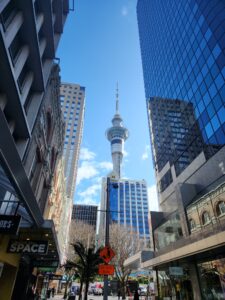At MK Law, we specialize in providing comprehensive immigration legal services tailored to meet the needs of individuals, families, and businesses. Our expertise spans a wide range of immigration matters, ensuring that you receive skilled guidance and effective solutions.
Explore our dedicated subpages for detailed infor mation:
mation:
Skilled Migrant Resident Category: This section offers insights into the process and requirements for skilled professionals seeking residency in New Zealand. Learn about eligibility criteria, application procedures, and how our expertise can assist in navigating this pathway.
Green List Category: Here, we delve into the Green List Category, designed for individuals with specific skills that are in high demand in New Zealand. Understand the qualifications needed and how we can help you capitalize on this opportunity.
Accredited Employer Work Visa: Our guide on the Accredited Employer Work Visa provides information for those seeking employment under this visa category. Discover the steps involved, employer requirements, and our role in facilitating a smooth application process.
Partnership Visa: If you are applying for a visa based on your relationship with a New Zealand resident or citizen, our Partnership Visa section provides essential information on eligibility, documentation, and the legal nuances of this process.
Reconsideration Request: Facing a declined temporary visa in New Zealand can be disheartening, but you have an opportunity for a second chance. Our Reconsideration page provides crucial guidance on how to apply for a reconsideration of your declined visa. Learn about the eligibility criteria, necessary steps, and timelines to submit your request. We also share inspiring stories of clients who successfully navigated this process.
Deportation Matters: Facing deportation can be challenging and stressful. Our Deportation Matters page outlines legal strategies, rights, and how our experienced team can offer support and representation in these critical situations.
 Special Directions: For unique or exceptional immigration cases, the Special Directions page explains how we can assist in navigating complex legal scenarios that require special consideration by immigration authorities.
Special Directions: For unique or exceptional immigration cases, the Special Directions page explains how we can assist in navigating complex legal scenarios that require special consideration by immigration authorities.
Citizenship: Embark on the journey to becoming a New Zealand citizen with our comprehensive guide on the citizenship process. At MK Law, we understand the significance of this life-changing step and are dedicated to providing you with all the necessary information and support. Our citizenship guide delves into the rights and responsibilities of New Zealand citizens, outlines the essential eligibility criteria, and offers a detailed overview of the character assessment process, ensuring your path to citizenship is clear and straightforward. Whether you’re navigating eligibility requirements, character checks, or application procedures, MK Law is here to guide you every step of the way towards achieving your dream of calling New Zealand home.
You must be logged in to post a comment.